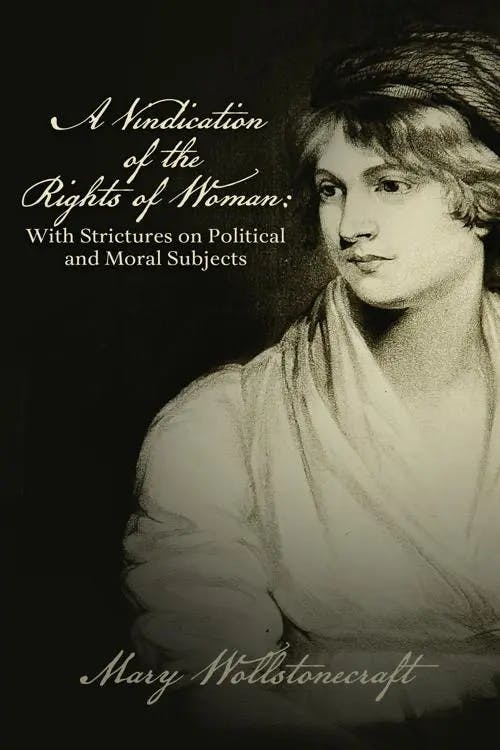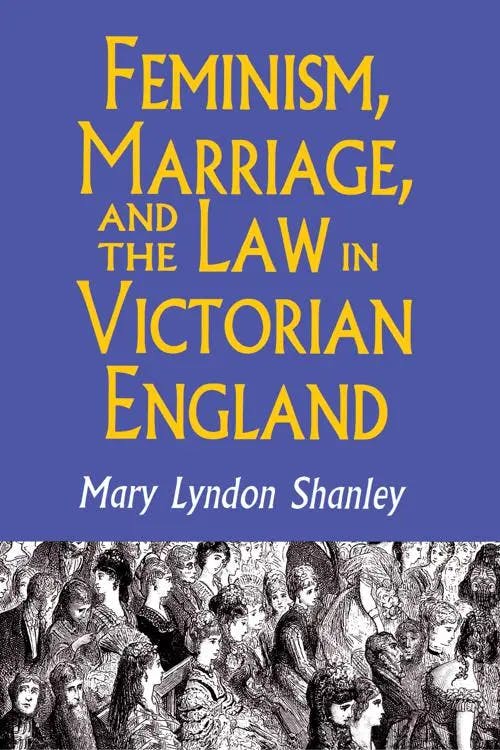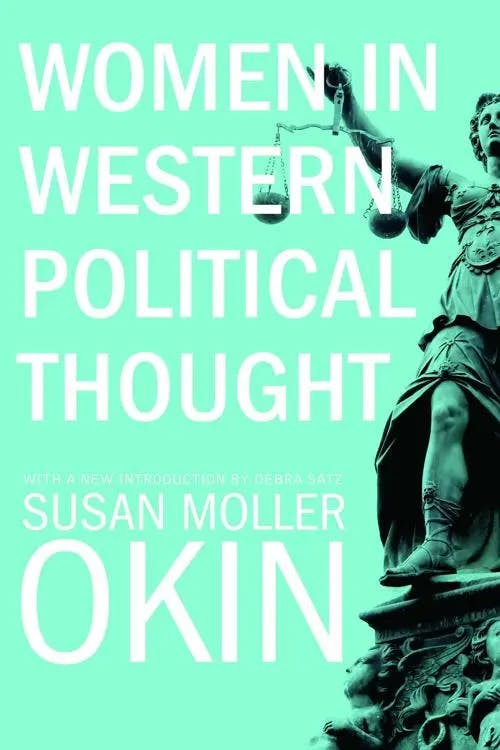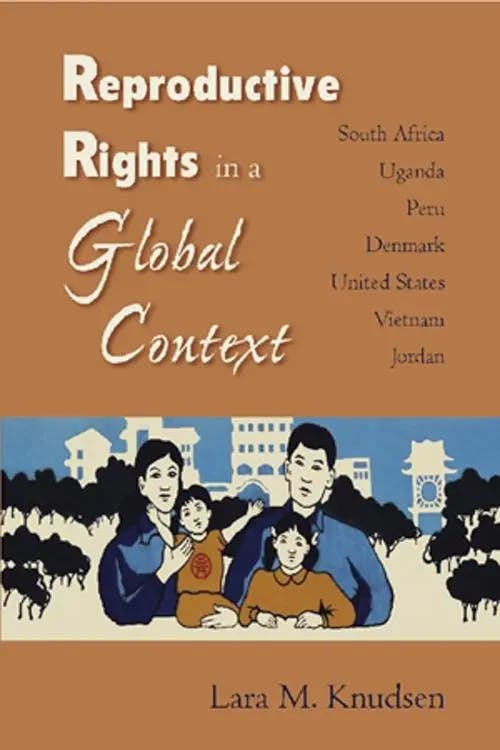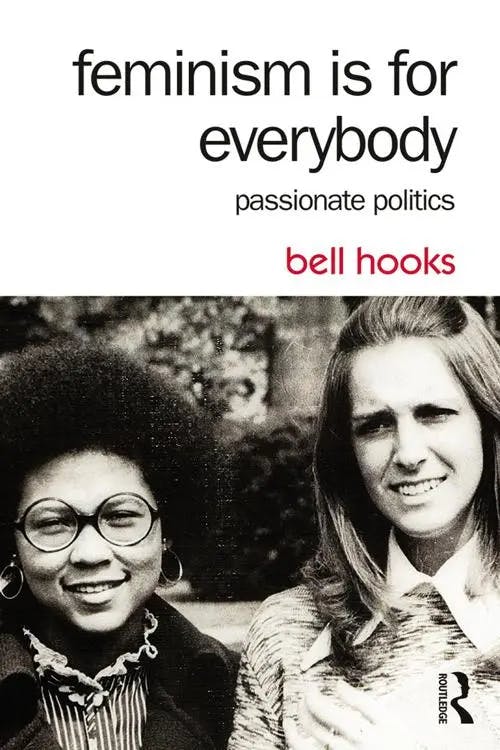What is Liberal Feminism?
PhD, English Literature (Lancaster University)
Date Published: 22.03.2023,
Last Updated: 05.02.2024
Share this article
Defining liberal feminism
Liberal feminism (also known as mainstream feminism) is one of the earliest branches of feminism, and one which argues that women’s oppression arises from unequal opportunities in education, politics, and law. Liberal feminists assert that women, as they have the same critical faculties as men, should have access to equal rights and opportunities. Failure to provide these basic human rights to women, feminists argue, prevents them from living as autonomous and independent beings. Chris Beasley writes that,
Given an assumed commonality between the sexes and the focus on access to what men have in society, liberal feminists do not perceive the sexes to be ‘at war’ or dismiss that which has been associated with men. Not surprisingly, liberal feminism involves an emphasis upon reform of society rather than revolutionary change. (1999)
Chris Beasley
Given an assumed commonality between the sexes and the focus on access to what men have in society, liberal feminists do not perceive the sexes to be ‘at war’ or dismiss that which has been associated with men. Not surprisingly, liberal feminism involves an emphasis upon reform of society rather than revolutionary change. (1999)
The reluctance of liberal feminists to promote revolutionary change has attracted heavy criticism by radical feminists, who suggest that only through overturning the current patriarchal system can women gain true equality.
The achievements of liberal feminism, from helping secure the vote to marital rights laws, cannot be understated. This guide will take you through some of the landmark gains of the movement, from the Enlightenment period (see our introduction to Modernity for more on the Enlightenment) to the modern day.
The Enlightenment and natural rights
Women had voiced their dissatisfaction with the status quo prior to the organisation of a recognised feminist movement. The ideals of liberal feminism were inspired by the seventeenth- and eighteenth-century writings of the Enlightenment (also referred to as the Age of Reason). Enlightenment thinkers, such as John Locke and Jean-Jacques Rousseau, argued that men should use their reason in order to improve their conditions. This rationality would be used to promote (religious) tolerance, science, freedom and happiness. Locke argued that “life, liberty, and estate” were inalienable “natural rights” that are God-given and cannot be taken away by the state (Two Treatises of Government And A Letter Concerning Toleration, 1689, [2008])
As male Enlightenment thinkers in the western world were writing about the natural rights of man, early feminists pointed out that such natural rights should apply to women. Feminist writers in this period stressed that women were just as capable and rational as their male counterparts and, therefore, should be afforded the same rights. Early activists include Mary Wollstonecraft, whose work The Vindication of the Rights of Women (1792, [2022]) lay the foundation for later feminist movements. In this work, Wollstonecraft argues that women should be given equal rights, in particular, that they should be given the opportunity to seek education. Here, Wollstonecraft directly critiques philosophers such as Jean-Jacques Rousseau who argued in Emile that women’s education should be focused on training them in traditional gender roles (1792, [2022]).
Combatting Rousseau’s arguments, Wollstonecraft explains how women are encouraged from a young age to focus only on their appearance, with their need for intellectual nourishment neglected. She writes,
taught from their infancy that beauty is woman's sceptre, the mind shapes itself to the body, and, roaming round its gilt cage, only seeks to adorn its prison. (1792, [2022])
Mary Wollstonecraft
taught from their infancy that beauty is woman's sceptre, the mind shapes itself to the body, and, roaming round its gilt cage, only seeks to adorn its prison. (1792, [2022])
Wollstonecraft suggested that if women were seen as frivolous, it is only because they have been taught to behave in that way — rather than it being biological or innate. Wollstonecraft’s challenge of gender essentialism still remains topical among feminists today. Other feminist thinkers during this period include Sarah Grimké and Frances Wright.
In Feminist Theory (2012), Josephine Donovan highlights five basic tenets of liberal feminism during the Enlightenment:
Rationality was within the individual’s conscience; the conscience is, therefore, “regarded as a more reliable source of truth than any established institution or tradition.”
Men and women have the same souls and capability for rational thinking; they are “ontologically identical.”
Education, specifically critical thinking, is essential for women so they can contribute to society.
Women are rational individuals who seek truth and knowledge and whose dignity depends upon being granted independence.
The natural rights doctrine should apply to women.
The mainstream women’s rights movement would focus on political demands, specifically the right to vote.
From suffrage to NOW
The suffrage movement officially began in 1867 in Britain and in 1848 in the United States. This has often been referred to as the first wave of feminism (see Waves of Feminism). The campaign for the franchise to be extended to women was based upon the arguments made by Wollstonecraft and her peers — that women contributed to society (through work and their role within the family) and had a right to contribute politically. The suffrage campaign ended with the franchise being extended to women in the US in 1919 and in Britain in 1928.
Since the end of the campaign for suffrage, liberal feminism has focused on extending women’s rights in other areas, including reproductive rights and access to education and certain careers. One of the main groups for organizing reform campaigns is the National Organization of Women (NOW), founded in the US in 1966 by prominent feminist writer Betty Friedan. NOW has been instrumental in the passing of a multitude of women’s rights legislation in the US. Some of NOW’s achievements over the past fifty years include:
- 1967: Endorsing the legalization of abortion.
- 1969: Establishing women’s studies courses at universities in California, Michigan, and Princeton.
- 1970: Passing of the Equal Rights Amendment, guaranteeing equal rights for all US citizens regardless of sex.
- 1973: Creating Rape Crisis Centers and hotlines across the country and beginning campaigns to redefine rape as a violent crime.
- 1975: Sponsoring the “Alice Doesn’t Day” women’s strike to draw attention to the unnoticed services women provide.
- 1976: Creating the NOW Task Force on Battered Women.
- 1978: Helping to pass the Rape Shield Law aimed at protecting the privacy of rape survivors.
- 1978: Helping to pass The Pregnancy Discrimination Act (drafted by NOW).
- 1998: Sex, sexual orientation, and disability added to federal hate crimes legislation thanks to NOW allies in Congress.
NOW outlines the following focuses of its current agenda:
- reproductive rights
- economic justice
- ending violence against women
- racial justice
- LGBTQIA+ rights
- constitutional equality
Liberal feminism and family
For feminists, the nuclear family has long been a source of gender inequality. Early feminist activists cited how marriage placed women in a state of financial dependence and subordination. John Stuart Mill, in his seminal text The Subjection of Women (1869, [2018]), writes that women should “insist that marriage should be on equal conditions” as current marriage entails “giving themselves a master, and a master too of all their earthly possessions”. This insistence, however, would prove to be a challenge as traditional marital roles became embedded within legal and political frameworks during the Victorian period.
As Mary Lyndon Shanley writes in Feminism, Marriage, and the Law in Victorian England, 1850-1895,
The feminists’ task was to persuade Parliament to pass a series of statutes recasting the laws governing divorce, married women’s property, child custody, wife abuse, and the action for “restitution of conjugal rights” (which in effect gave a husband custody of his wife’s body by ordering an errant spouse to return home). (2020)
Mary Lyndon Shanley
The feminists’ task was to persuade Parliament to pass a series of statutes recasting the laws governing divorce, married women’s property, child custody, wife abuse, and the action for “restitution of conjugal rights” (which in effect gave a husband custody of his wife’s body by ordering an errant spouse to return home). (2020)
This task was not an easy one by any means and the vision of marriage equality that liberal feminists proposed would not be fully realised until many decades later. The most significant reforms for securing marriage equality include the Married Women’s Property Act (1848 in the US; 1888 in Britain), the Divorce Reform Act or “no fault divorce” (1969) and the criminalisation of marital rape (1991; spousal rape was banned in the US later in 1993).
One of the most influential works of the movement, Betty Friedan’s The Feminine Mystique (1964) centers around the patriarchal assumptions regarding domestic duties. The book challenges the idea that women can be entirely fulfilled through domestic responsibilities and their roles as wives and mothers. Since Friedan’s seminal work, liberal feminists have sought to understand further how the domestic space of the family constructs and reinforces gender roles. In The Sociology of Housework (1974, [2018]), liberal feminist and sociologist Ann Oakley argues that a child’s first understanding of gender roles occurs in the home, primarily through observation of their parents. Oakley argues that children are trained from a young age to see men as the providers and protectors and women as nurturing, primary caregivers. This understanding of gender roles occurs through manipulation and canalisation (the channelling of a child’s interests). Oakley explains that, for example, a mother may put undue emphasis on their female child’s physical appearance (manipulation) or socially reward her for playing with stereotypically “girl’s toys” (canalisation). Moreover, girls are expected to partake in domestic chores in preparation for future housewifery (1974, [2018]). All this is reinforced through social systems outside the household, such as school.
Following on from Oakley, in 1979, Susan Moller Okin’s work Women in Western Political Thought traced how political philosophy can help to explain the pervasiveness of gender inequality. Okin explains how the nuclear family and biological differences between the sexes are exclusively used to define women. Moreover,
It is the definition of women in terms of their wife-mother role that continues to be used, as we have seen, by the courts, and by society at large, to justify many kinds of discrimination against them, particularly in the spheres of education and employment. (1979, [2013])
Susan Moller Okin
It is the definition of women in terms of their wife-mother role that continues to be used, as we have seen, by the courts, and by society at large, to justify many kinds of discrimination against them, particularly in the spheres of education and employment. (1979, [2013])
Though the Equality Act (2010) has been passed since the time Okin was writing, there are still instances of gender-based discrimination in these areas, reaffirming that the allocation of women to the “wife-mother role” continues to persist ideologically.
For more on this, see our guide "What is Social Reproduction?"
Reproductive rights
Strongly connected to issues of family life are reproductive rights. As with radical feminism, reproductive rights (i.e., access to birth control, prenatal services, and the right to an abortion) are a key issue for mainstream feminists. As Lara M. Knudsen states in Reproductive Rights in a Global Context,
Despite the large scale of tragedy associated with poor reproductive health, development programs addressing such issues face innumerable obstacles and controversy. Abortion, contraception, and sex education strike at the heart of the most intimate areas of life, challenging our perceptions of what it means to be human and what women’s role in society should be. (2006)
Lara M. Knudsen
Despite the large scale of tragedy associated with poor reproductive health, development programs addressing such issues face innumerable obstacles and controversy. Abortion, contraception, and sex education strike at the heart of the most intimate areas of life, challenging our perceptions of what it means to be human and what women’s role in society should be. (2006)
Feminists believe women should have the right to choose what happens to their own bodies and that legislation should protect those women for whom motherhood is not a viable or desirable option. The freedom to choose is integral to women’s autonomy and sense of self.
This freedom to choose for women is not only restricted by certain legislation but by stigma and economic reality. As Judith Orr writes in Abortion Wars (2017),
Women are told we ‘can’t have it all’ — as if wanting to be financially independent and have a secure home and perhaps children is really asking too much. It is as if we have to accept the idea that if you have a womb you’d better limit your expectations. Women’s lives, their work and domestic arrangements are constantly a feature of public debate. Women are in a no-win position when it comes to their fertility.
Orr goes on to explain that women are stigmatized for choosing abortion (for rejecting their ‘destinies’ as mothers); at the same time, they face discrimination if they have children (via expensive childcare and work-based discrimination). Equally, Orr points out, women are told to work and have careers, yet are later condemned for having babies too late.
While there have been major gains in decriminalizing abortion in some areas (for example, in Ireland), access to abortion remains an issue for women on a global scale. In June 2022, the US Supreme Court overturned Roe v. Wade, a landmark piece of legislation that had, for fifty years, protected abortion as a federal right in the US. In October 2020, Poland made abortion illegal in almost all circumstances, prompting a wave of protests throughout the country. Feminists have highlighted that banning abortion does not end abortion but, in fact, only ends safe abortion.
Women in work
Another goal for liberal feminists is ensuring equality in the workplace in terms of treatment, pay, and opportunity. Though the Equality Act (2010) makes it illegal for an employer to discriminate on the basis of sex, indirect forms of discrimination continue to be a problem for women in the workplace. For example, feminists refer to “the glass ceiling” as a way to describe how women are faced with invisible barriers in their careers that stop them from reaching higher positions or progressing (see Cotter, “The Glass Ceiling Effect,” 2001).
Liberal feminists further draw attention to the gender pay gap. The gender pay gap is the difference in earnings between men and women (for more information see Abdel-Raouf and Buhler, The Gender Pay Gap, 2021). The disparity in wages between men and women remains a barrier for women wanting to advance their careers. Women who do persevere despite these financial barriers are often met with other forms of discrimination within the workplace, including sexual harassment. The #MeToo movement, emerging in 2017, drew attention to the everyday harassment women face, particularly in the workplace.
Criticisms of liberal feminism
Robin Morgan outlines liberal feminism’s incompatibility with the goals of radical feminism. Morgan’s main issues with liberal feminism are as follows:
- Liberal feminists want to settle for “a piece of the pie as currently and poisonously baked”; this means, according to Morgan, that liberal feminists focus on reform within an already contaminated patriarchal system.
- Liberal feminism views the sex industry as a form of “faux sexual liberation.” (Radical feminists like Morgan believe prostitution and pornography are oppressive to women; liberal feminists, however, often argue that women should be free to choose a career in sex work).
- Within this branch of feminism, “‘wonderfully supportive’ male spouses or lovers [...] ‘permit’ a woman to be a feminist.”
- Liberal feminism’s homogenizing of “women’s issues” ignores the “organic connections between sexism, racism, class and homophobic and ethnocentric bigotries, environmental degradation, and, well, everything else.”
- Liberal feminism plays by “the boys’ rules” and thinks that “imitating establishment men” could be good for women.
(‘Light Bulbs, Radishes, and the Politics of the 21st Century’ in Radically Speaking: Feminism Reclaimed, 1996)
Critics such as Catherine A. Mackinnon have echoed Morgan’s argument regarding women “imitating” men in their quest for equality. Mackinnon points out that “[u]nder the sameness rubric, women are measured according to correspondence with man, their equality judged by proximity to his measure” (Toward a Feminist Theory of the State, 1991). This, according to Mackinnon, positions maleness as the ideal that women should strive towards and fails to acknowledge the differences between men and women. For example, women demonstrating their value or skill by accessing typically male-dominated roles does nothing to question why we esteem these typically “male” roles as being inherently more valuable.
Carole Pateman furthers this argument, citing liberal feminism’s failure to acknowledge that these problems run deeper. According to Pateman,
Liberal feminism assumes that the relevant political problem is to show that women possess the capacities men possess and can do what men can do. However, this also assumes that there is no political significance to the fact that women have one natural ability which men lack: women, but not men, are able to give birth. (2018)
Carole Pateman
Liberal feminism assumes that the relevant political problem is to show that women possess the capacities men possess and can do what men can do. However, this also assumes that there is no political significance to the fact that women have one natural ability which men lack: women, but not men, are able to give birth. (2018)
While feminist organizations such as NOW promote inclusivity, there are criticisms still that this branch of the movement has insufficiently accounted for cultural and racial differences in the pursuit of women’s rights. Prominent writer bell hooks criticized liberal feminists as primarily concerned with becoming equal to men of their own class. In Feminism Is for Everybody, hooks writes that,
implicit in this simplistic definition of women’s liberation is a dismissal of race and class as factors that, in conjunction with sexism, determine the extent to which an individual will be discriminated against, exploited or oppressed. (2004)
bell hooks
implicit in this simplistic definition of women’s liberation is a dismissal of race and class as factors that, in conjunction with sexism, determine the extent to which an individual will be discriminated against, exploited or oppressed. (2004)
hooks further highlights that,
many liberal feminist reforms simply reinforced capitalist, materialist values (illustrating the flexibility of capitalism) without truly liberating women economically. (2004)
This argument is echoed by fourth-wave feminist scholars who have seen an emergence of “white feminism” and “neoliberal feminism,” particularly in the corporate world. These feminists prioritize women’s individual success and capacity to “have it all” whilst working within a capitalist framework (see our guides to Waves of Feminism and Postfeminism). Intersectional feminist theories strive to move away from issues solely impacting white, western feminists. Instead, intersectional feminists examine a range of identities that can impact women’s oppression such as race, class, disability, or sexuality.
Though legislative reforms have dramatically improved women's lives (particularly in the West), much still needs to be done, hinting at a further problem with liberal feminism’s approach. If political, legal, and educational reform was at the heart of gender inequality, we should have witnessed a complete overturning of gender-based issues in the home and at work. Domestic abuse, rape within marriage, and unfair distribution of household chores, for example, persist in spite of on-paper reform. Feminism still has a long way to go, as Okin argues,
Though women are now citizens, it is undeniable that they have remained second-class citizens. Measured in terms of characteristics traditionally valued in citizens, such as education, economic independence, or occupational status, they are still far behind men. Likewise, measured in terms of political participation — especially at higher levels — and political power, they are nowhere near the equals of men. (2013)
While these are all salient points, it is worth acknowledging the major milestones achieved by liberal feminism since its vision of gender equality was foreseen by the likes of Wollstonecraft in the eighteenth century. Many of the original tenets of liberal feminism are still clear principles of the movement today and have been adopted by the movement more broadly. For example, the basic premise that women are reasonable individuals, capable of logical thought, is still defended by feminists today when confronted with the stereotype of “emotional women” versus “pragmatic and rational men.” The notion that gender is socially constructed rather than biologically determined has united all branches of feminism and continues to feature in discussions of sex, equality, and gender today (see Waves of Feminism). Though it is widely acknowledged that mainstream feminism has its pitfalls, particularly regarding its narrow approach to reform and problems with inclusivity, its importance in shaping feminism today and paving the way for emerging women’s rights movements cannot be understated.
Further liberal feminism reading on Perlego
DuBois, E. C. (1998) Woman Suffrage and Women's Rights. NYU Press. Available at: https://www.perlego.com/book/720837/woman-suffrage-and-womens-rights-pdf
McBride, D. E and J. A Parry. (2016) Women's Rights in the USA: Policy Debates and Gender Roles. Routledge. Available at: https://www.perlego.com/book/1558480/womens-rights-in-the-usa-policy-debates-and-gender-roles-pdf
Thomas, T. A and T. J. Boisseau. (2011) Feminist Legal History: Essays on Women and Law. NYU Press. Available at: https://www.perlego.com/book/719252/feminist-legal-history-essays-on-women-and-law-pdf
Who are the key liberal feminist thinkers?
What are the main criticisms of liberal feminism?
What is the difference between liberal feminism and radical feminism?
Bibliography
Abdel-Raouf, F and P. M. Buhler. (2021) The Gender Pay Gap. Routledge. Available at: https://www.perlego.com/book/1683942/the-gender-pay-gap-understanding-the-numbers-pdf
Beasley, C. (1999) What is Feminism? Sage Publications. Available at: https://www.perlego.com/book/859976/what-is-feminism-an-introduction-to-feminist-theory-pdf
Donovan, J. (2012) Feminist Theory. 4th edn. Continuum. Available at: https://www.perlego.com/book/1353641/feminist-theory-fourth-edition-the-intellectual-traditions-pdf
Friedan, B. (1963) The Feminine Mystique. W. W. Norton. Available at: https://wwnorton.com/books/the-feminine-mystique/
hooks, b. (2014) Feminism Is for Everybody: Passionate Politics. 2nd edn. Routledge. Available at: https://www.perlego.com/book/1559321/feminism-is-for-everybody-passionate-politics-pdf
Knudsen, L. M. (2006) Reproductive Rights in a Global Context. Vanderbilt University Press. Available at: https://www.perlego.com/book/1976906/reproductive-rights-in-a-global-context-south-africa-uganda-peru-denmark-united-states-vietnam-jordan-pdf
Locke, J. (1689 [2008]) Two Treatises of Government And A Letter Concerning Toleration. Yale University Press. Available at: https://www.perlego.com/book/1089418/two-treatises-of-government-and-a-letter-concerning-toleration-pdf
Lyndon Stanley, M. (2020) Feminism, Marriage, and the Law in Victorian England, 1850-1895. Princeton University Press. Available at: https://www.perlego.com/book/1563889/feminism-marriage-and-the-law-in-victorian-england-18501895-pdf
Mackinnon, C. A. (1991) Toward a Feminist Theory of the State. Harvard University Press. Available at: https://www.perlego.com/book/2094996/toward-a-feminist-theory-of-the-state-pdf
Mill, J. S. (1869 [2018]) ‘The Subjection of Women. Books on Demand. Available at: https://www.perlego.com/book/1783212/the-subjection-of-women-pdf
Moller Okin, S. (1979 [2013]) Women in Western Political Thought. Princeton University Press. Available at: https://www.perlego.com/book/735707/women-in-western-political-thought-pdf
Morgan, R (1996) ‘Light Bulbs, Radishes, and the Politics of the 21st Century’ in Radically Speaking: Feminism Reclaimed. Spinifex Press. Available at: https://www.perlego.com/book/1566783/radically-speaking-feminism-reclaimed-pdf
Oakley, A. (1974, [2018]) The Sociology of Housework. Policy Press. Available at: https://www.perlego.com/book/1657896/the-sociology-of-housework-pdf
Orr, J. (2017) Abortion Wars. Policy Press. Available at: https://www.perlego.com/book/3533022/abortion-wars-the-fight-for-reproductive-rights-pdf
Pateman, C. (2018) The Disorder of Women: Democracy, Feminism and Political Theory. Polity Press. Available at: https://www.perlego.com/book/2783993/the-disorder-of-women-democracy-feminism-and-political-theory-pdf
Rousseau, J. (1792 [2020]) Emile. Open Road Media. Available at: https://www.perlego.com/book/2448714/emile-or-on-education-pdf
Wollstonecraft, M. (1792 [2022]) The Vindication of the Rights of Women. Dreamscape Media. Available at: https://www.perlego.com/book/3254783/a-vindication-of-the-rights-of-woman-with-strictures-on-political-and-moral-subjects-pdf
PhD, English Literature (Lancaster University)
Sophie Raine has a PhD from Lancaster University. Her work focuses on penny dreadfuls and urban spaces. Her previous publications have been featured in VPFA (2019; 2022) and the Palgrave Handbook for Steam Age Gothic (2021) and her co-edited collection Penny Dreadfuls and the Gothic was released in 2023 with University of Wales Press.


